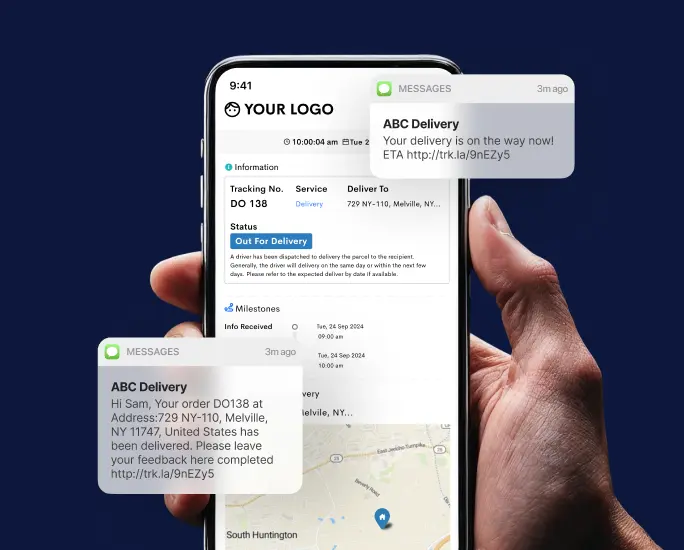Have you ever placed an order for a product online, only to be surprised when it arrived quicker than expected? Chances are the seller or manufacturer had already factored in lead time for delivery.
Lead time for delivery is an important concept for businesses and consumers alike, as it informs how quickly products reach customers and can have a major impact on customer satisfaction.
In this blog post, we’ll look at what lead time for delivery actually means and how businesses factor it into their schedules.
By better understanding lead time, you will be able to make more informed decisions about ordering products in the future, saving yourself both time and money!
What does lead time for delivery mean?
Lead time is an important component of inventory management, referring to the amount of time that passes between when an order is placed and when it is fulfilled.
This can be especially critical in industries where production requires specific timing, such as just-in-time manufacturing processes.
For example, waiting too long to order inventory can lead to production delays and lost sales.
By understanding lead time and factoring it into inventory planning, businesses are better able to identify expected delivery times, create more accurate budgets and measure success against established timelines.
Companies should also take into account other external factors that may impact their lead-time cycles in order to ensure that they remain on top of demand changes and provide customers with timely service prompting positive results for their business.
Types of Lead Time
This part explores the four different types of lead time for delivery: customer, material, production, and cumulative – how they differ from each other as well as what strategies you can use to reduce them.
Customer
Customer-related lead time is the amount of time from when a customer’s order is placed to when it is delivered.
This period can be crucial to the success of any business, as a customer’s experience with the company largely depends on how long it takes for them to receive their product or service.
It is important that companies have efficient processes in place so that customers feel that their orders are being handled quickly and efficiently.
While many factors can affect customer-related lead time, such as production schedules and shipping methods, businesses should strive to deliver products and services as quickly as possible while also providing quality service and assurance throughout the process.
Fast, reliable delivery ensures satisfied customers who will come back again.
Material
Lead time for materials is an important factor that affects success. When it comes to material lead time, companies should consider both the cost of the material and how long it will take to receive the material.
Depending on a company’s individual needs, they can choose between shorter but more costly lead times or longer and less expensive ones.
Properly managing material lead times allows companies to keep their production costs low while also maintaining customer satisfaction from timely product delivery.
This way, companies can remain competitive in a demanding market.
Production
Production lead time is an essential part of the manufacturing and production process, as it sets a timeline for ordering inventory and other material resources needed for a particular project or product.
Taking the lead time into consideration ensures that the materials are ready when they are needed, thus preventing production lines from becoming bottlenecked due to delays in obtaining supplies.
Additionally, taking lead time into account can help manufacturers optimize their inventory costs by avoiding excess stock levels which can occur if material purchases take too long to arrive.
Knowing projected lead times and managing them effectively is important in ensuring a successful and profitable production line.
Cumulative
Cumulative lead time is a measure of how long it takes to assemble and deliver a product. It starts from the time when there is demand for the product until it’s available at the customer’s location.
Here, not only is the time taken to produce the product considered but also any intermediate supply chain process such as procurement, transportation and distribution are included in the cumulative lead time calculation.
In short, the cumulative lead time accounts for all the delays along with production delay and thus results in an accurate measure of how far in advance products need to be ordered.
Knowing this information helps organizations in better forecasting, inventory management and better customer service.
How to calculate lead time for deliveries
Calculating lead time for delivery is an important step in customer service and order fulfillment. Lead time refers to the amount of time from when a customer places an order until the item is delivered.
It’s important to account for processing, packing, shipping, and any other steps it takes to deliver the product promptly.
To accurately calculate lead time for delivery, allow enough buffer days in case of any unforeseen delays or issues with your carrier. Make sure you talk to your carriers in advance to understand their timeline and guarantee so that you have realistic expectations set.
Ultimately, calculating lead time will help ensure customer satisfaction as they will receive orders efficiently and on time.
How to reduce shipping lead time
Here are a few of those tips that can help you reduce shipping lead time significantly—from improving processes with automation to using delivery management software—so keep reading!
Improve processes with automation
Delivery lead times can be greatly reduced by improving processes with automation. Automated solutions in shipping departments allow businesses to save on handling and administrative costs, while minimizing the number of personnel needed.
Automation also provides greater accuracy when dealing with multiple vendors, orders, and customers.
Additional benefits include better tracking of shipments, clearer communication between companies, and faster delivery of goods. The implementation of automation can also streamline the process of transporting goods from port to port with advanced loading software.
Ultimately, reducing the lead time for delivery through improved processes with automation can drastically improve customer satisfaction while providing businesses a competitive advantage in the global marketplace.
Tracking deliveries, workers, and productivity
Tracking deliveries, workers, and productivity can help reduce lead times.
By monitoring logistics data such as the amount of goods shipped, delivery timelines, and return processes for products and materials, businesses are able to identify any bottlenecks causing delays and take immediate corrective actions to meet customer requirements.
Moreover, tracking performance metrics of employees’ activities allows them to be held accountable for their work efficiency and reduces errors that can prolong the shipping process.
Finally, productivity improvements focus on developing strategies that satisfy customers while decreasing labor costs, while achieving results faster.
When used effectively together, these methods of tracking will not only reduce shipping lead time but also improve customer satisfaction with a company’s services.
Outsourcing, dropshipping, etc.
One of the main ways to reduce lead time for delivery is by outsourcing fulfillment services. By finding an experienced third-party warehousing and order fulfillment service, businesses can benefit from improved shipping efficiency and lower costs.
Dropshipping is another great way of reducing lead time, since orders are shipped directly from the manufacturer or wholesaler. This eliminates the need for multiple steps in the shipping process, resulting in faster delivery times.
Finally, investing in high quality packing and shipping materials also serves to reduce lead times, as it reduces the chances of delays due to damaged goods or other mishaps that may cause delays during transit.
Use delivery management software
Delivery management software can be invaluable for businesses struggling to reduce lead time in their shipping. By automating much of the customer-facing tasks, delivery management software helps to streamline customer relationships and provide a more efficient service.
With the ability to integrate with existing store fronts, this type of software gives customers the convenience of tracking their orders easily.
It eliminates the need for printing and mailing labels, reducing manual labor requirements and freeing up resources that can instead focus on expediting orders.
Furthermore, businesses can trust that deliveries are being made accurately in a timely manner due to automation processes, making contact with customers easier.
Delivery management software is an essential tool when it comes to optimizing customer satisfaction while reducing shipping lead times.
Reduce Delivery Lead Time with Detrack
Reducing shipping lead time can be a challenge for businesses, especially as customers increasingly expect packages to be delivered quickly and efficiently. A helpful way to reduce delivery lead time is through Detrack, a cloud-based software that offers an end-to-end solution to manage your daily deliveries.
Detrack captures real-time updates such as pick up time, delivery status and confirmation from recipients, enabling customers to see exactly how far along their package is in its journey.
It also leverages the power of mobile devices such as barcode scanning capabilities and GPS location tracking for even faster delivery times.
With features such as real-time alerts and automated delivery confirmations, Detrack enables businesses to easily keep customers informed and fulfilled sooner than ever before.












